- Home
- Alison Weir
Mary Boleyn: The Great and Infamous Whore Page 9
Mary Boleyn: The Great and Infamous Whore Read online
Page 9
Once all the scattered ships had made land, the Princess and her train spent a short time recuperating in Boulogne, then set off for Etaples and Montreuil, the ladies riding on palfreys with scarlet saddle cloths, with their clothes and personal effects following behind in covered carts. They were feted on the way with tableaux and pageants, and as they approached Montreuil, they were formally welcomed by the young man who—unless Mary Tudor bore a son—was King Louis’s heir: his cousin, the Dauphin François, Count of Angoulême, come with an escort of royal dukes to escort the new queen to Abbeville, where a “surprise” meeting with King Louis, the eager bridegroom, was staged. “What can an old valetudinarian suffering from leprosy want with a handsome girl of eighteen?” asked Peter Martyr, an Italian observer. She would, he predicted, be the death of Louis. But even if the bride-to-be was dismayed at the sight of her future husband’s “decayed complexion,” the meeting went well.
Mary Boleyn was a little way behind her mistress when Queen Mary made her state entry into Abbeville, escorted by a magnificent procession of great lords and two thousand knights. Mary was probably one of the gentlewomen who rode on palfreys caparisoned in mulberry velvet fringed with white and pale blue silk, following in order of precedence behind the great ladies in carriages and the senior gentlewomen on palfreys trapped in cloth of gold and purple velvet. Throughout the day, Mary and her fellow attendants were kept busy assisting the Queen with the many changes of clothing that were required for the various ceremonies.
At Abbeville, Mary Tudor and her retinue attended a Mass of thanksgiving at the church of St. Vulfran before joining King Louis at a reception, which was followed by a great feast. Then Louis’s daughter, poor, lame, squinting Claude, the wife of Dauphin François, escorted the new queen and her party to the ancient Hôtel de Gruthuse, where they were accommodated in fine apartments overlooking a pretty garden. In the evening, young Mary Boleyn attended her first court ball, hosted by the Dauphin and Dauphine, where there was “dancing and music resounding to the skies.”80
The next day was October 9, the feast of St. Denis, France’s patron saint. Mary, like her mistress and the English lords in her train, was up more than an hour before the dawn broke to prepare for the wedding ceremony. It was a chilly morning, and many donned fur-lined robes of cloth of gold, velvet, damask, and silk. After the bridal procession had formed in the Queen’s apartments, Mary Boleyn took her place behind Mary Tudor with the twelve other women of the household, each being escorted by a gentleman as they followed their mistress across the gardens to the great hall of the Hôtel de Gruthuse, which was hung with gold. As the Queen entered, the trumpets sounded a fanfare, and then, resplendent in gold brocade and laden with jewels, she was married to the “antique and feeble” Louis XII by the Cardinal Bishop of Bayeux, who also celebrated the nuptial Mass.81 Afterward, Mary Boleyn would have joined the throng of courtiers feasting in the great hall, while the new queen entertained the royal ladies of France to a private dinner in her own lodgings.
Tradition has it that the wedding ceremony is depicted in a tapestry dating from c.1525 or earlier, now at Hever Castle, and that Mary and Anne Boleyn are among the female attendants portrayed, although there is no way of identifying them; the figure of a maid of honor in a red gown was once said to be Anne. But Anne was almost certainly not present at the wedding.
That evening, the King and Queen threw a nuptial ball at the Hôtel de Gruthuse, which heralded three days of feasting and celebrations. After his wedding night, Louis claimed to have “performed marvels” and to have “crossed the river” three times; one observer, the Seigneur de Fleuranges, could well believe it, as “he was most uncomfortable.” Dauphin François, whose long nose had been much put out of joint by this wedding that threatened his succession, had however set someone to spy on the royal couple in their marriage bed, and was mightily relieved to be told that “it was not possible for the King and Queen to beget children.”82
On the morning after the wedding,83 Mary’s grandfather, the Duke of Norfolk, visited the new Queen’s English attendants to discuss which of them should stay with her in France. But King Louis, not wishing his wife to be subject to unwanted foreign influence, preempted Norfolk’s decision, peremptorily dismissing Lady Guildford and most of Mary Tudor’s English servants, much to his bride’s distress. In the face of this, he allowed her to keep only her six youngest attendants as maids of honor: among the six was “Mademoiselle Boleyne.”84 That must have been Mary, then aged between thirteen and eighteen, as it was she, and not her sister, who received payment for her service during the months of October, November, and December 1514. Mary’s retention in the Queen’s household was, in the well-informed opinion of Charles Brandon, Duke of Suffolk, who arrived on an embassy to France that autumn, thanks to the machinations of her grandfather, the Duke of Norfolk.85
Mary Tudor was most put out at the dismissal of most of her English attendants, and dismissive of the abilities of those, including Mary Boleyn, who were left to her, who—as she complained to her brother, Henry VIII—were immature and “such as never had experience or knowledge how to advertise or give me counsel in any time of need.”86 That time of need was to come sooner than she could have dreamed, but in the meantime she had to swallow her annoyance and attend to the demands of her husband, who was soon to fall ill with gout.
Mary Boleyn found herself staying on in France with the King’s cousin, Lady Elizabeth Grey, sister to the Marquess of Dorset; Florence Hastings, the young Dowager Lady Grey de Wilton; Anne, daughter of Sir Edward Jerningham; Lady Mary Fiennes, daughter of Thomas, Lord Dacre of Gilsland; and Lady Jane Bourchier, the daughter of John, Lord Berners. In a short while, probably sometime after Christmas, Anne Boleyn would join them, and—no doubt because of her youth—be allowed to stay. In place of Lady Guildford, an experienced French noblewoman was appointed Dame d’Honneur; this was Françoise de Maillé, Madame d’Aumont, who had formerly served the saintly Jeanne de France, the King’s repudiated first wife, and whose husband, Jean d’Aumont, was one of Louis’s most trusted seigneurs. From now on Madame d’Aumont was in charge of Mary Boleyn and the other maids of honor.
After a week spent at Abbeville and a short sojourn at Beauvais, Queen Mary was crowned at the great abbey of St. Denis, near Paris, on Sunday, November 5. The next day, she entered Paris in state, to the rapturous acclaim of the citizens. Every vantage point was decorated with lilies and roses, in defiance of the season, and all along the processional route there were lavish tableaux and pageants. Young Mary Boleyn would no doubt have marveled greatly at them, and at the sights of the city of Paris that she would have seen as she passed: the Church of the Holy Innocents, the Châtelet de Paris, the Palais Royal, the soaring cathedral of Notre Dame, the Sainte Chapelle, and, finally, the palace of the Conciergerie, to which they were escorted by torchlight in the evening. Here, there was another lavish ball.
The next day the Queen and her suite moved with the King to the vast Hôtel des Tournelles, which was set on twenty acres and could accommodate six thousand people with ease. Magnificently decorated and embellished, it boasted twenty chapels, twelve galleries, and beautiful grounds. To a young girl like Mary Boleyn, such a palace must have been awe-inspiring. Sadly, its splendors have long vanished, and only its subterranean wine cellars survive today.
A week later Mary was in attendance on the Queen at the great jousts organized by Dauphin François in honor of Mary Tudor’s coronation. In these contests, which took place in the Parc des Tournelles, the handsome Charles Brandon, Duke of Suffolk, excelled, while the ailing Louis watched from a couch. Afterward there was a lavish state banquet, then all the English lords, including Mary’s grandfather of Norfolk, departed for England, and on November 27 the King and Queen moved to the fourteenth century chateau of St. Germain-en-Laye outside Paris; only the medieval Sainte Chapelle survives from the palace that Mary Boleyn knew, for it was rebuilt in 1539. Here the ailing Louis could rest, while his queen represented him a
t receptions and other functions in Paris.
December saw Mary Boleyn and her companions moving with the royal couple back to the Hôtel de Tournelles in Paris for Christmas. Because of the King’s poor health, however, the festivities had to be brought to a halt, which meant that Mary Boleyn’s taste of the lavish court life in France was to be brief.
That month, the lascivious Dauphin François began to show a blatant interest in Queen Mary, sparking gossip at court and earning him an angry reproof from his domineering and ambitious mother, Louise of Savoy. But King Louis was seemingly unbothered by the dishonorable behavior of his heir. On December 28 he wrote to Henry VIII that he was entirely satisfied with his beautiful young bride.
When Mary Boleyn’s sister Anne finally arrived at the court of France, it was to find her new mistress already widowed. King Louis, having supposedly worn himself out by the “marvels” he had performed in the marriage bed, had died in a fit of vomiting in the midst of a violent storm on January 1, 1515. Queen Mary, whose marriage to him had lasted just eighty-two days, is said to have fainted when the news was brought to her, and it may be that Mary Boleyn was among those of her women who ministered to her at this time, and tried to offer some comfort.
But Mary Tudor’s ordeal had only just begun. Clad in the traditional nunlike white mourning—the deuil blanc—of French royal widows, she was required by tradition to remain in seclusion in gloomy black-draped apartments in the Hôtel de Cluny, a small Gothic-Renaissance palace in the Rue des Mathurins St. Jacques on the banks of the Seine; it had once been the town house of the abbots of Cluny, and now houses the famous Musée de Cluny. Queen Mary had to remain there for the prescribed forty days of mourning, closely watched on the orders of Louise of Savoy, the mother of the new king, François I, until it was established that she was not expecting her late husband’s child. As she was permitted to be waited on by her English attendants, both the Boleyn sisters were probably with her at this gloomy time, confined to the richly appointed but dark chambre de la reine blanche, with the windows shrouded so that no daylight could penetrate, the walls and mourning bed hung with black, and only candles to light them day and night.
Possibly Anne was “delighted to see Mary again” after a year’s separation,87 yet the few pointers we have to the nature of the relationship between the sisters suggest a certain rivalry, and anyway their reunion was not in the happiest of circumstances, for they had to witness the Dowager Queen becoming distraught—as her increasingly frantic letters prove—not just because of her dismal surroundings, but as a result of King François’s unwelcome attentions. He began by calling upon her daily discreetly to ascertain whether she was pregnant—for upon this turned his likelihood of keeping the crown—but when she told him the happy news that he was the only possible King of France, he did not cease his visits. He became amorous, and even hinted that he wished to divorce his wife Claude and marry Mary—when in fact he was scheming to make a match for her that was advantageous to himself, before Henry VIII could bestow his sister’s hand on some prince who might be hostile to France. Soon, he dismissed Mary’s English attendants, who had no doubt witnessed his overtures and might write home of them, and replaced them with the unsympathetic Countess of Nevers and French maids of honor, whom he commanded to withdraw when he was with their mistress. Tales of his courtship—or attempts at seduction—were later wildly exaggerated by the French court historian, Brantôme,88 but what happened in reality was enough to drive the Dowager Queen to rash action.
Mary had not wanted to marry Louis. Before leaving England she had made her brother Henry VIII promise that she could choose her second husband, having already, it seems, discovered that she had feelings for Charles Brandon, Duke of Suffolk. When Henry, knowing this, sent Suffolk to comfort the widowed Mary and escort her home, he warned him not to propose marriage, for, unmindful of his earlier promise, he had other plans for his sister.
By the time the English embassy, with Suffolk at its head, arrived in France, Mary Boleyn was back in attendance on the Dowager Queen. Once released from seclusion and able to receive visitors and order her household once more, Mary Tudor had defied King François, dismissed her French ladies, and ordered her English ones to rejoin her service.89 But now she was being cautious: the Boleyn sisters and their fellow attendants were asked to retire while their mistress gave audience to Suffolk alone.90
The young queen was in deep distress. Desperate to escape François’s importunings, and the French marriages he suggested she make for his own political—and personal—advantage, she warned Suffolk that if he did not marry her without delay, she would retire to a convent. When Suffolk pointed out the difficulties, he provoked a torrent of weeping and emotional blackmail that he was too smitten to withstand. In the end, with King François’s approval, he “married her heartily” in secret, with only ten witnesses present.91 Since Brandon’s two diplomatic companions did not attend the secret wedding, it is quite likely that Mary and Anne Boleyn were among the witnesses to the ceremony, which took place sometime in February 1515, in the chapel of the Hôtel de Cluny.
Henry VIII showed himself outraged when informed of his sister’s impetuous marriage. Suffolk had not only broken his promise, but had committed a capital crime in marrying a princess of the blood royal without permission. The announcement of the marriage, coming so soon after the late king’s death, caused a scandal at the French court, and obliged Henry to agree to a second, public ceremony. It was only in return for a crippling fine, and protracted and groveling apologies, that the King finally forgave his sister for her ill-advised marriage to his friend.
One lesson that Mary Boleyn may have learned from this episode was that a woman could get her own way and marry the man she desired if she was sufficiently brave and determined to fight for what she wanted.92 It was exactly what Mary herself would do one day.
4
A Very Great Whore?
Sometime during her six-month sojourn in France, the teenage Mary Boleyn apparently succumbed to the temptations of the court—and they were manifold. The sybaritic and notoriously licentious Dauphin, later King François I, who epitomized all the ideals expected of, and admired in, a Renaissance monarch, and whose magnificent court, despite being one of the great centers of European culture and civilization,1 was to become a byword for debauchery, set the tone. He was habitually “clothed in women,” considered whoring a daily sport on a par with hunting,2 and boasted of his special “petite bande” of courtesans. From 1518, he acknowledged several maîtresses-en-titre in succession—an arrangement that would no doubt have horrified Henry VIII and his courtiers—not to mention indulging in casual affairs with numerous “sweethearts,” in which he drank “from many fountains.”3 A notorious voyeur, he commanded spyholes and secret doors to be made in his palaces, so that he could watch women undressing and making love. He himself declared that “a court without ladies is like a year without springtime, or a spring without roses.”
François was then twenty-one, an impressive six feet in height, and broad-shouldered, with an athletic physique and slim legs, although already he was putting on weight. He was considered handsome, with his dark, saturnine looks and long Valois nose, his cynical eyes and sensual, mocking lips, and he was undoubtedly attractive to women. A contemporary described him as “young, mighty, and insatiable, always reading or talking of such enterprises as whet and inflame himself and his hearers.”4 Cultivated, intelligent, artistic, and open-handed, yet at the same time wily and extravagant, he was also spirited, literate, and a brilliant, merry, and witty conversationalist who had impeccable courtly manners and boundless ambition. To his contemporaries, he exemplified all the kingly virtues.
He had lost his virginity at fifteen, and thereafter was “all fire and flame for the ladies.”5 Married that same year, he grew fond of his wife, the patient, plain, plump, and crippled Claude, but treated her chiefly as a brood mare. His were rarely affairs of the heart; he loved women in two ways, for sex and for the
ir beauty, of which he was a connoisseur. On the evidence of portraits of his mistresses, he was attracted to plump brunettes, which leaves one to wonder whether Mary Boleyn fit that description. It is certainly possible, since her sister Anne was a brunette and her son, Henry Carey, had brown hair.
The French court might have been one of the greatest cultural and artistic centers in Christendom, but English observers often professed themselves shocked at the lax morality that prevailed there. Gallantry was the order of the day, with “rejoicing and entertainment,” but promiscuity reigned. “Rarely did any maid or wife leave that court chaste,” wrote a contemporary.6 One of François’s princely relations commissioned a gold cup engraved inside with an image of a couple having sex, and he would watch with prurient interest as the lady he fancied drained it to reveal the erotic relief, and await her reaction. The King’s own almoner, a priest called Buraud, felt obliged to apologize to his mistress for having satisfied her only twelve times in one night, claiming it was the fault of a medicine he was taking.7
There is just one piece of evidence to suggest that, for a brief spell, Mary Boleyn became the mistress of King François himself, but it dates from more than twenty years later. On March 10, 1536, Rodolfo Pio, Bishop of Faenza, the Papal Nuncio in Paris, was to write that “the French king knew her here in France ‘per una grandissima ribalda et infame sopre tutte’ ” (“for a very great whore, and infamous above all”).8 It is this statement—bolstered by later gossip that actually referred to Anne Boleyn—that has led numerous writers to assume that Mary acquired a notorious reputation at the French court.

 Richard III and the Princes in the Tower
Richard III and the Princes in the Tower Britain's Royal Families: The Complete Genealogy
Britain's Royal Families: The Complete Genealogy The Lady in the Tower: The Fall of Anne Boleyn
The Lady in the Tower: The Fall of Anne Boleyn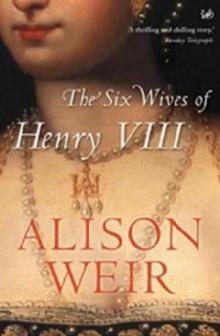 Six Wives of Henry VIII
Six Wives of Henry VIII Elizabeth of York: A Tudor Queen and Her World
Elizabeth of York: A Tudor Queen and Her World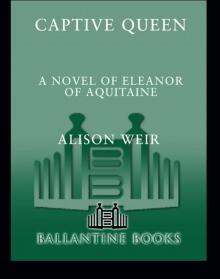 Captive Queen
Captive Queen Innocent Traitor
Innocent Traitor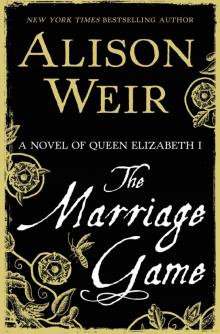 The Marriage Game
The Marriage Game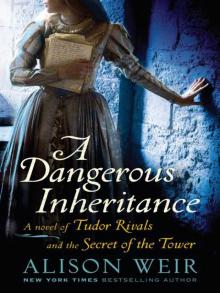 A Dangerous Inheritance
A Dangerous Inheritance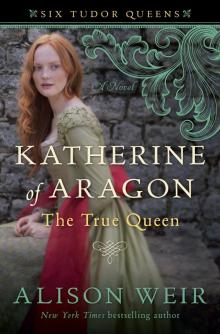 Katherine of Aragón: The True Queen
Katherine of Aragón: The True Queen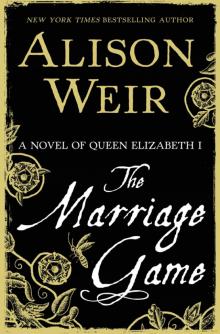 The Marriage Game: A Novel of Queen Elizabeth I
The Marriage Game: A Novel of Queen Elizabeth I Princes in the Tower
Princes in the Tower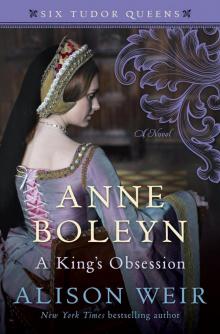 Anne Boleyn: A King's Obsession
Anne Boleyn: A King's Obsession Traitors of the Tower
Traitors of the Tower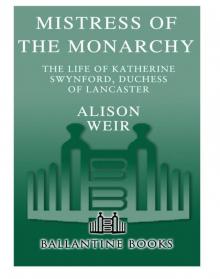 Mistress of the Monarchy: The Life of Katherine Swynford, Duchess of Lancaster
Mistress of the Monarchy: The Life of Katherine Swynford, Duchess of Lancaster Queens of the Conquest: England’s Medieval Queens
Queens of the Conquest: England’s Medieval Queens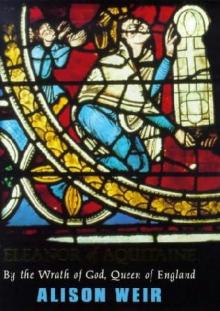 Eleanor of Aquitaine: A Life
Eleanor of Aquitaine: A Life Mary, Queen of Scots, and the Murder of Lord Darnley
Mary, Queen of Scots, and the Murder of Lord Darnley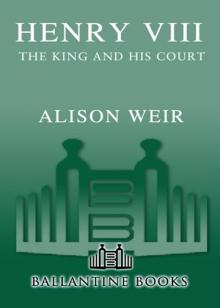 Henry VIII: The King and His Court
Henry VIII: The King and His Court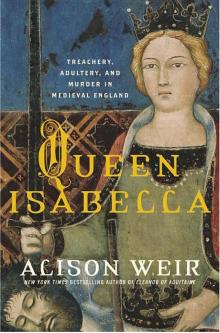 Queen Isabella: Treachery, Adultery, and Murder in Medieval England
Queen Isabella: Treachery, Adultery, and Murder in Medieval England Katheryn Howard, the Scandalous Queen
Katheryn Howard, the Scandalous Queen Arthur- Prince of the Roses
Arthur- Prince of the Roses The Wars of the Roses
The Wars of the Roses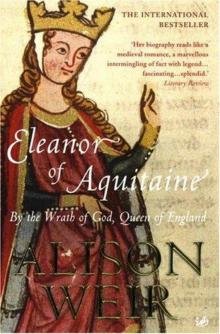 Eleanor of Aquitaine: By the Wrath of God, Queen of England
Eleanor of Aquitaine: By the Wrath of God, Queen of England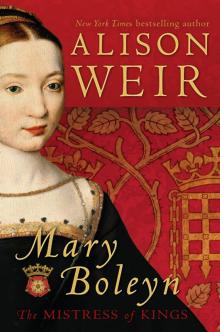 Mary Boleyn: The Great and Infamous Whore
Mary Boleyn: The Great and Infamous Whore Jane Seymour: The Haunted Queen
Jane Seymour: The Haunted Queen Anna of Kleve, the Princess in the Portrait
Anna of Kleve, the Princess in the Portrait Lancaster and York: The Wars of the Roses
Lancaster and York: The Wars of the Roses The Grandmother's Tale
The Grandmother's Tale The Princess of Scotland (Six Tudor Queens #5.5)
The Princess of Scotland (Six Tudor Queens #5.5)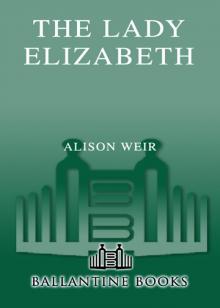 The Lady Elizabeth
The Lady Elizabeth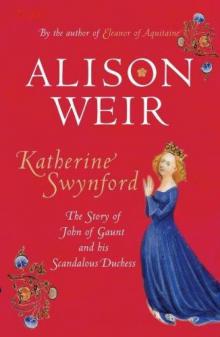 Katherine Swynford: The Story of John of Gaunt and His Scandalous Duchess
Katherine Swynford: The Story of John of Gaunt and His Scandalous Duchess The Curse of the Hungerfords
The Curse of the Hungerfords The Lost Tudor Princess: The Life of Lady Margaret Douglas
The Lost Tudor Princess: The Life of Lady Margaret Douglas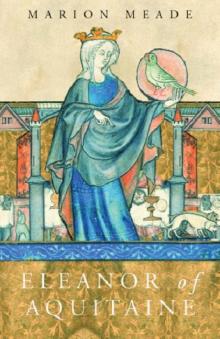 Eleanor of Aquitaine
Eleanor of Aquitaine Mistress of the Monarchy
Mistress of the Monarchy The Lost Tudor Princess
The Lost Tudor Princess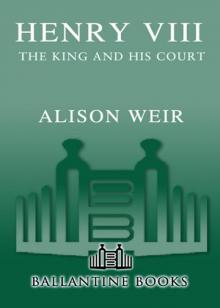 Henry VIII
Henry VIII Anne Boleyn, a King's Obsession
Anne Boleyn, a King's Obsession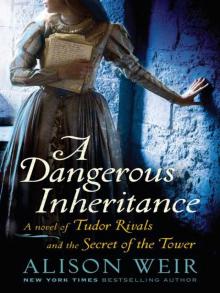 A Dangerous Inheritance: A Novel of Tudor Rivals and the Secret of the Tower
A Dangerous Inheritance: A Novel of Tudor Rivals and the Secret of the Tower Elizabeth of York
Elizabeth of York Katherine of Aragon, the True Queen
Katherine of Aragon, the True Queen Katherine Swynford
Katherine Swynford Wars of the Roses
Wars of the Roses Queens of the Conquest
Queens of the Conquest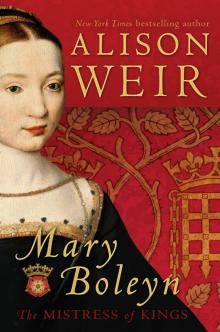 Mary Boleyn
Mary Boleyn Britain's Royal Families
Britain's Royal Families The Tower Is Full of Ghosts Today
The Tower Is Full of Ghosts Today Life of Elizabeth I
Life of Elizabeth I Anne Boleyn A King's Obssession
Anne Boleyn A King's Obssession Lancaster and York
Lancaster and York Jane Seymour, the Haunted Queen
Jane Seymour, the Haunted Queen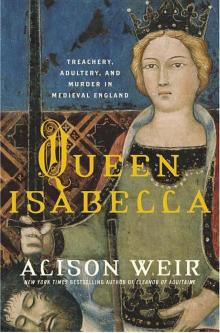 Queen Isabella
Queen Isabella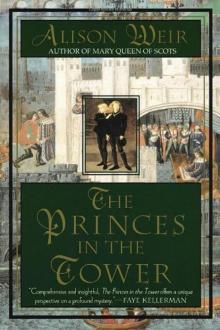 The princes in the tower
The princes in the tower